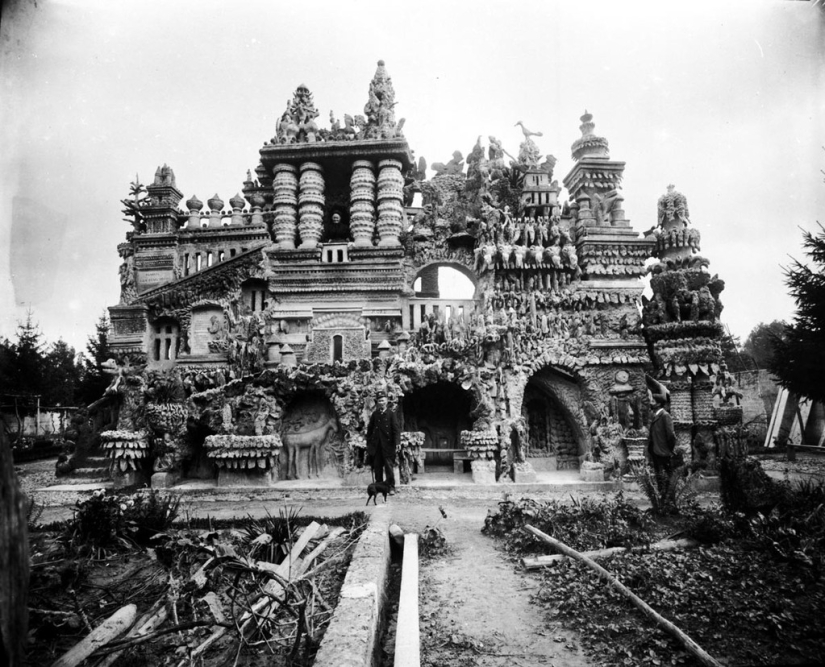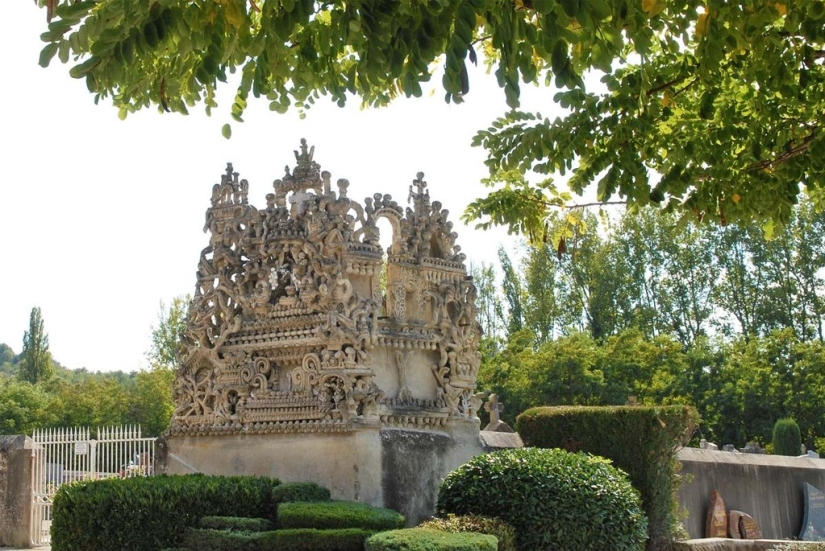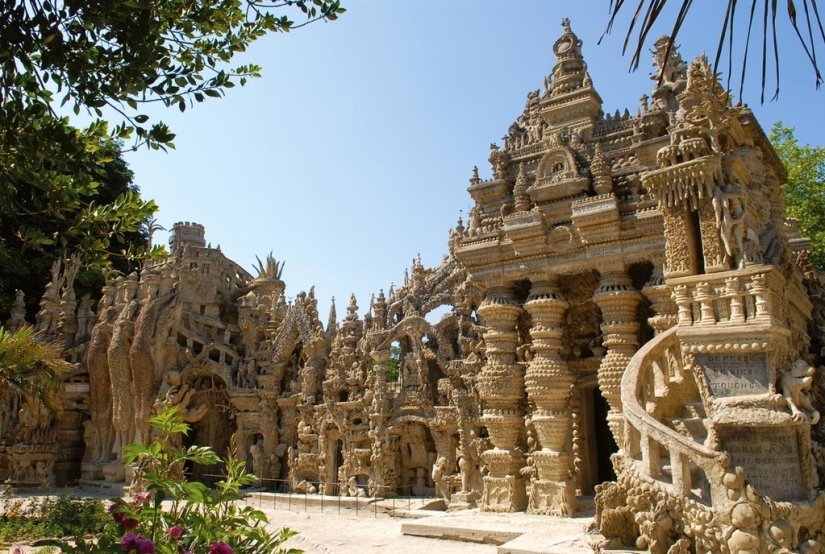"Ideal Palace" postman Cheval
Categories: Design and Architecture
By Pictolic https://pictolic.com/article/ideal-palace-postman-cheval.htmlThe rural postman Ferdinand Cheval became famous for the fact that he devoted thirty-three years of his life to the construction of the "Ideal Palace" - a bizarre structure, which was later highly appreciated by the surrealists led by Andre Breton, as well as by famous artists Pablo Picasso and Max Ernst. The Ideal Palace is a colossal work of one creator, which in 1969 was recognized as an architectural monument of the historical heritage of France.
(Total 15 photos)


1. Ferdinand Cheval was born into a poor peasant family and from childhood he helped his father in his work, so he went to school from time to time. At the age of twenty, our hero left his native village of Sharm, getting a job as a baker's assistant in another city. Instead, Cheval was supposed to be taken to serve in the army, but this never happened, presumably, his too small stature served as a contraindication.

2. Ferdinand Cheval was forty-two years old when he got a job as a postman in the village of Hauterives and remarried. By that time, many misfortunes had happened in the life of our hero: his first wife Rosalie and their first-born had died. Cheval had a son, Cyril, whose upbringing he entrusted to his parents, and from his second wife, the postman had a daughter.

3. On April 19, 1879, a turning point happened in the life of a simple rural postman - he found a stone that inspired him to create the "Ideal Palace". Since then, in his spare time, day and night, in any weather, with the help of the most unpretentious tools, Ferdinan Cheval has realized his dream - he built a palace beyond imagination.

4. From a letter from Ferdinand Cheval: “It was in April 1879: I was walking very quickly, in a hurry to deliver fresh mail, suddenly my leg caught on something, and I rolled head over heels along the road. Deciding to inquire about what had caused my fall, I looked around the scene and noticed a strangely shaped stone. I looked at the stone and was amazed, it seemed perfect to me. Looking around, I realized that this stone was not the only one, there were cobblestones no less outstanding than this one. I picked up the stone, carefully wrapped it in a handkerchief, and promised myself that I would return for the others. Since then, I have lost peace and sleep: I went to look for stones and dragged them on my back to the place where I began to dig a ditch.

5. Ferdinand Cheval launched construction on the territory of his garden, which lasted thirty-three years. He continued to work as a postman, forgot about sleep, skipped meals, but every day his “Ideal Palace” became taller and more bizarre. It was the daily hard work of one creator.

6. Do not forget that the 19th century is an era of great change. For example, in France, this is the fall of the monarchy and the proclamation of the Second French Republic, powerful scientific and medical progress, the construction of railways, the birth of photography. The spirit of the era could not help but influence the village postman, who learned about all the events from newspapers and illustrated magazines, which he carried around the village. The imagination of Ferdinand Cheval was fueled by news that reached him from all over the world.

7. In 1894, Cheval's fifteen-year-old daughter died from her second marriage, this misfortune deeply traumatized the postman. Two years after this sad event, at the age of sixty, our hero retired and devoted himself entirely to the construction of the palace.

8. In 1905, an article about the “Ideal Palace” of a hardworking postman appeared for the first time in the magazine Life in Illustrations. And although in 1907 the palace was still not completed, Ferdinand Cheval hired a servant, whose duty it was to provide entry to the palace for those wishing to visit it.

9. The construction of the palace was completed in 1912 (Cheval was 76 years old at that time). Having finished his titanic work and writing over the entrance: “Now let someone more stubborn than me get to work,” Ferdinand Cheval did not have time to put his working tools far away.

10. Having received a refusal from the local authorities in the request to be buried in his palace after death, our hero built the “Tomb of Silence and Endless Peace” at the local cemetery. It took Cheval another eight years to build it, and in 1922 the tomb was ready for use. At that time, the incredible postman turned 86 years old!

11. Unfortunately, in the same year 1922, when the construction of the “Tomb of Silence and Infinite Peace” was completed, the second son of Ferdinand Cheval died, and the second wife also died two years later. The postman outlived all his immediate family.

12. Ferdinand Cheval died on August 19, 1924 at the age of 88, having managed to complete the fourth, “sincere and truthful” version of his biography. The results of life are summed up.

13. In 1969, the "Ideal Palace" was recognized as an architectural monument of the historical heritage of France as the only example of "naive architecture" in the country. It regularly hosts concerts by famous performers, as well as art exhibitions.

14. Ferdinand Cheval is considered to be the forerunner of art brut (fr. art brut - raw art), since this creator did not have a special artistic or architectural education.

15. In 2013, the “Ideal Palace” of the postman Cheval was visited by 150,800 tourists who arrived from different parts of the globe.
The material was prepared with the support of the Center for Promotion and Development of Creativity of People with Mental Disorders, Darya Evseeva evseeva-centre.ru
Information about the lectures and events of the "Center" - evseeva-centre.ru/meropriyatiya
Keywords: Palace | Monuments | Postman | Building | France
Post News ArticleRecent articles

Most of us think that the color of the eggshell does not play any role and it is possible not to pay attention. But it's not and ...

The more we rely on technology, the more potential power hackers gain over us. It doesn't matter if their goal is to help or cause ...
Related articles

Turkish and Persian harems are well known to everyone, many poems and novels have been written about them, as well as historical ...

They are the envy of millions of girls around the world and dream of the same fate. However, not all princesses have a life like in ...

You have probably heard about how people threw objectionable monuments off their pedestals during the protests and riots that have ...

Creating a good portrait is one of the most difficult tasks for any photographer. In order to make a really natural and memorable ...